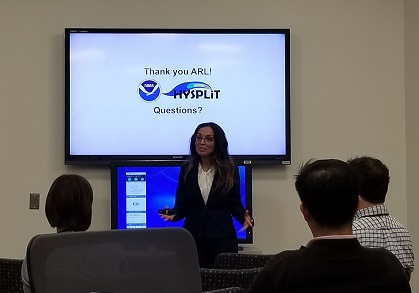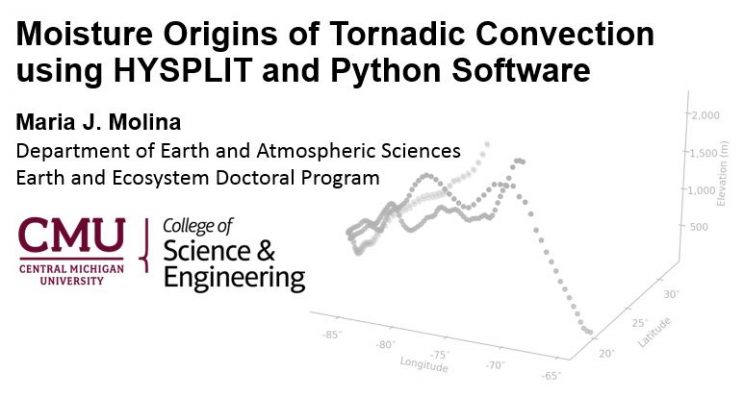HYSPLIT from the User Perspective – ARL Welcomes Maria Molina
June 2018
June 2018
Much like the critical operations of the HYSPLIT model itself, many of the ARL staff’s daily interactions happen behind the scenes. Engagement with the university community and its student population is one notable exception. ARL proudly serves as a hub of knowledge within the atmospheric sciences community, with a keen understanding that the collaborative exchange of knowledge is fundamental to maintaining this position. And while the HYSPLIT team enjoys frequent exchanges with academia, it isn’t often that a HYSPLIT user makes a personal visit to engage with our staff. That’s why ARL was particularly delighted to host Ms. Maria Molina, a student in the Department of Earth and Atmospheric Sciences Earth and Ecosystem Doctoral Program at Central Michigan University, on June 7, 2018.
During Ms. Molina’s presentation of “Moisture Origins of Tornadic Convection Using HYSPLIT and Python Software,” she explained that her utilization of the HYSPLIT model stemmed from the realization that statistical methods weren’t capable of answering the moisture origination question (back-trajectory analysis to determine the origin of air masses is one of the most common model applications for HYSPLIT). As we studied the results that HYSPLIT enabled for Ms. Molina, were struck by the notion that the meeting epitomized return on investment. She had come to us to share not only our impact on her work, but also to share the tools she’s developing to enhance her research and results – tools that the HYSPLIT developers may want to use, or at least bear in mind, during future improvements to the model. We wish Ms. Molina the best in her future educational and scientific endeavors and hope that she’ll continue to share with us both her findings and her ideas for improvement.

